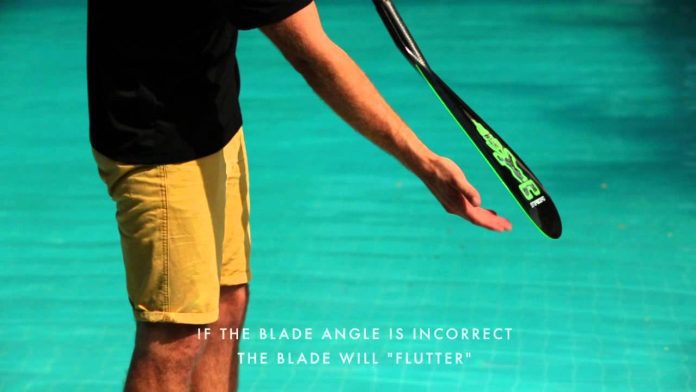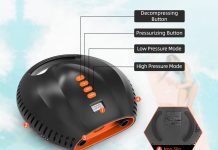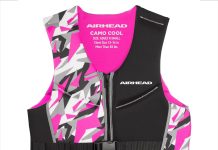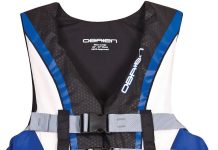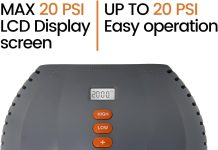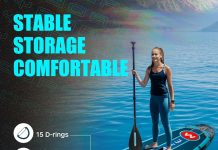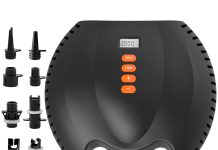We all know that stand-up paddleboarding (SUP) has gained immense popularity in recent years, with more and more people taking to the water to enjoy this fun and exciting activity.
But if you’re new to the sport, you may wonder, “How do I properly hold a SUP paddle?” Holding the paddle correctly is essential for optimal performance and preventing injuries, so let’s dive in and learn the proper technique for holding a SUP paddle.
Proper Grip
Regarding paddleboarding, properly gripping your paddle is essential for effective and efficient strokes. Let’s consider some critical factors for achieving the perfect grip.
Choose the Right Paddle
Before we dive into the details of holding the paddle, choosing a well-suited paddle for your needs is essential. The right paddle will depend on height, paddling style, and the type of paddleboarding you will do. Select a paddle that feels comfortable and allows for a proper grip.
Hold the Shaft Properly
Start by holding the paddle shaft with both hands to achieve a proper grip. Your hands should be shoulder-width apart, ensuring a secure grip on the paddle. Avoid gripping the paddle too tightly, as it can lead to fatigue and discomfort during longer paddling sessions.
Grip Adjustment
It’s essential to adjust your grip based on the type of stroke you’re executing. Move your bottom hand down the paddle shaft for a more powerful stroke, creating a shorter lever arm. This will provide you with more power and control. On the other hand, if you’re looking for a more relaxed or less powerful stroke, adjust your grip accordingly by moving your bottom hand up the shaft.
Hand Placement
Placing your hands on the paddle is crucial in maintaining balance and control while paddleboarding. Let’s explore the recommended hand placement techniques.
Top Hand Placement
The top hand should be positioned closer to the blade on the paddle shaft’s upper part. This hand is responsible for guiding the paddle and controlling the direction of your strokes. Ensure a relaxed grip while keeping your fingers comfortably curled around the shaft.
Bottom Hand Placement
The bottom hand is the powerhouse that generates the power for your strokes. Position your bottom hand slightly lower on the paddle shaft, striking a balance between too high and too low. This placement allows for a comfortable and powerful stroke.
Stance
The proper stance on the paddleboard is crucial for maintaining balance and stability and maximizing your paddle strokes. Let’s look at the critical elements of a proper stance.
Feet Placement
Place your feet shoulder-width apart, parallel, and centered on the board. This balanced stance provides a solid foundation and helps distribute your weight evenly, enhancing stability on the water.
Body Position
Maintain an upright and relaxed posture with your knees slightly bent. Avoid locking your knees or leaning too far forward or backward, as it can reduce your balance. Engage your core muscles to help stabilize your body while paddleboarding.
Paddle Angle
The angle of your paddle during different strokes is crucial for effective maneuvering. Let’s explore the recommended paddle angles for various paddling techniques.
Angle for Forward Stroke
Maintaining a vertical paddle angle is essential during a forward stroke. This means that the blade of your paddle should be perpendicular to the water’s surface as it enters and exits the water. This angle maximizes power and efficiency, propelling you forward with each stroke.
Angle for Turning
When executing turning maneuvers, it is advisable to slightly angle the blade of your paddle toward the direction you want to turn. This angled paddle position helps create resistance against the water, allowing for smoother and more controlled turns.
Starting Position
The starting position is crucial for a smooth and efficient paddleboarding experience. Let’s explore the two critical components of the starting position.
Ready Position
Before initiating any stroke, it’s essential to establish a stable and comfortable ready position. Hold your paddle with both hands in the proper grip as discussed earlier, and position it slightly behind you, with the blade angled outward. This ready position allows an immediate and seamless transition into the starting stroke.
Starting Stroke
Reach forward with your top hand to begin paddling, driving the paddle’s blade into the water. Push the blade downward and backward, engaging your core and upper body muscles to create forward momentum. Once the blade reaches your feet, exit it smoothly from the water and return to the starting position, ready for the next stroke.
Forward Stroke Technique
Mastering the forward stroke technique is essential for efficient paddling and covering longer distances. Let’s break down the critical elements of a proper forward stroke.
Reach Forward
Initiate the forward stroke by reaching forward with your top hand. The reach should be extended but comfortable, allowing you to maximize each stroke’s power and efficiency.
Plant the Paddle
As you reach forward, plant the blade of your paddle in the water near the front of the board. Make sure the entire blade is submerged for optimal propulsion.
Pull the Paddle
Engage your core and upper body muscles to pull the paddle backward, keeping your arms straight and using your torso rotation to generate power. Focus on pulling the paddle past your hips, using your lower hand as a pivot point for a longer stroke.
Exit the Blade
Once your paddle reaches your hips, smoothly exit the blade from the water. Lift the blade out of the water while maintaining a relaxed grip and return to the starting position to initiate the next stroke.
Turning Techniques
Executing turns effectively is essential for maneuvering in various water conditions and exploring different areas on your paddleboard. Let’s explore two essential turning techniques.
Sweep Stroke
To execute a sweep stroke, start by planting the paddle blade near the front of the board, angled away from the board, and towards the direction you want to turn. Use a sweeping motion, drawing the blade in a wide arc away from the board while submerging it. This technique generates an efficient turning force and helps maintain stability throughout the turn.
Back Paddle
The back paddle technique helps make quick adjustments or execute tight turns. Start by reversing your paddle stroke, pushing the blade away from the board instead of pulling it towards you. This will create a reverse propulsion, allowing you to turn swiftly.
Bracing Technique
Bracing techniques are essential for maintaining balance and stability and preventing falls in challenging conditions. Let’s explore two essential bracing techniques.
Low Brace
The low brace technique stabilizes your paddleboard in rougher waters or when encountering small waves. To perform a low brace, place your lower hand on the shaft of the paddle near the blade and submerge the blade in the water. Apply downward pressure on the blade to prevent sinking too deep, maintaining your balance and stability.
High Brace
The high brace technique helps maintain balance when encountering more giant waves or choppy waters. Start by raising your lower hand on the paddle shaft closer to the top hand and extend your top arm outward. Submerge the blade just enough to catch the water’s resistance, gently pulling it towards you. This technique helps you stay upright and stabilize the paddleboard in challenging conditions.
Paddle Feathering
Feathering the paddle refers to rotating the blade’s angle relative to the shaft, reducing wind resistance during your strokes. Let’s explore the benefits of feathering and how to achieve it.
Benefits of Feathering
Feathering the paddle can be beneficial, especially in windy conditions. By feathering the paddle, you minimize wind resistance as the blade moves through the air during the recovery phase of your stroke. This allows for smoother, more efficient paddling, reducing strain on your arms and improving overall performance.
How to Feather the Paddle
To feather the paddle, adjust the angle of the blade relative to the shaft. Most modern SUP paddles have adjustable ferrules that allow you to rotate the blade. Experiment with different angles until you find the one that feels comfortable and minimizes wind resistance. Test it in different wind conditions to find the optimal feathering angle.
Paddle Length and Sizing
Choosing the right paddle length and sizing is crucial for efficiency, comfort, and injury prevention. Let’s explore the key considerations for paddle length selection.
Choosing the Right Length
The right paddle length will depend on height, style, and the paddling you’ll be doing. As a general guideline, stand-up paddleboard paddles are typically 8-10 inches taller than your height. This allows for proper reach and power generation during strokes. However, we recommend trying out different paddle lengths and adjusting them to your comfort and paddling style.
Sizing Guide
If you’re unsure about the correct paddle length, a simple sizing guide can help. Stand next to your paddle with your arm raised straight above your head. Adjust the paddle’s length until your wrist aligns with the top of the handle. This provides a good starting point for finding the appropriate paddle length.
By following these proper grip techniques, hand placements, stance guidelines, paddle angles, starting positions, stroke techniques, turning techniques, bracing techniques, feathering methods, and paddle sizing considerations, you’ll be well on your way to mastering the art of paddleboarding.
Remember, practice makes perfect, so get out on the water, enjoy the experience, and embrace the tranquility and adventure of stand-up paddleboarding. Happy paddling!

